Based in Japan and founded in 1881, Seiko has established itself as a dominant ubiquitous giant in the watch industry. Known for producing reliable timepieces at affordable prices, they’ve earned the respect of seasoned enthusiasts and casual watch wearers. However, the iconic Japanese brand also produces many timepieces, and navigating its catalog to find the best Seiko watches can be intimidating. That’s where the Two Broke Watch Snobs can help.
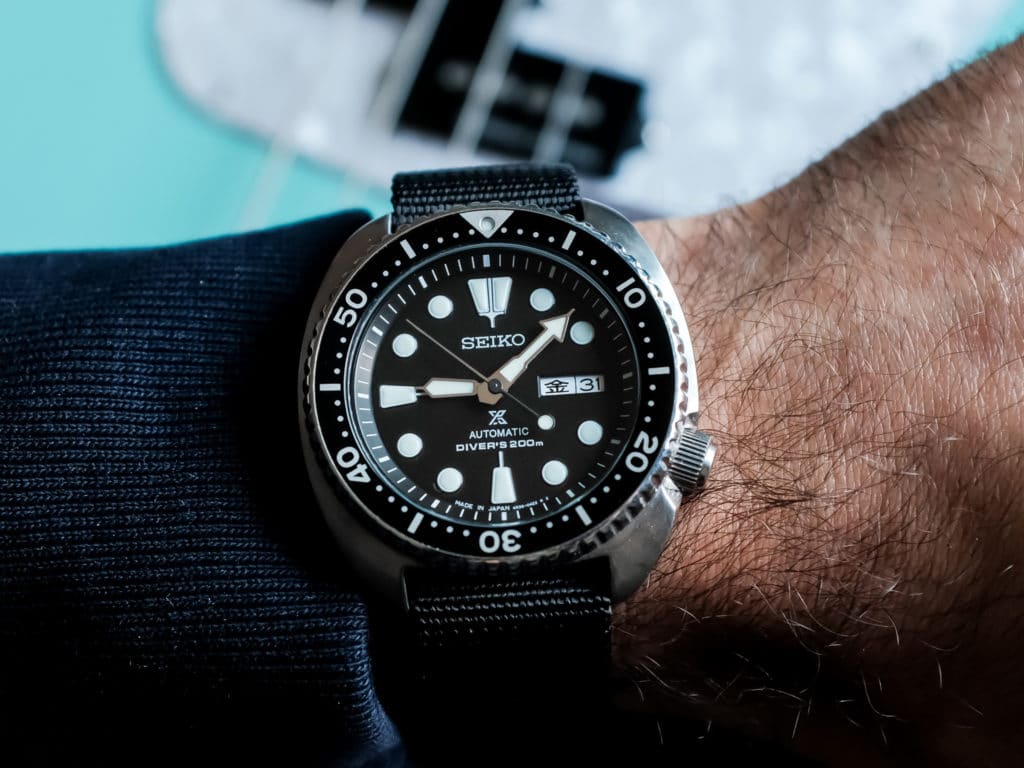
We’ve been reviewing Seiko watches for nearly a decade and over that time we’ve determined which models are worth your time and which ones are not. That’s why we’re proud to share our list of the best ones we’ve ever reviewed. We’re always reviewing new timepieces so if there is a watch you think should be included here, let us know in the comments and we’ll see if we can conduct a hands-on review of it.
Seiko 5 SRPE51
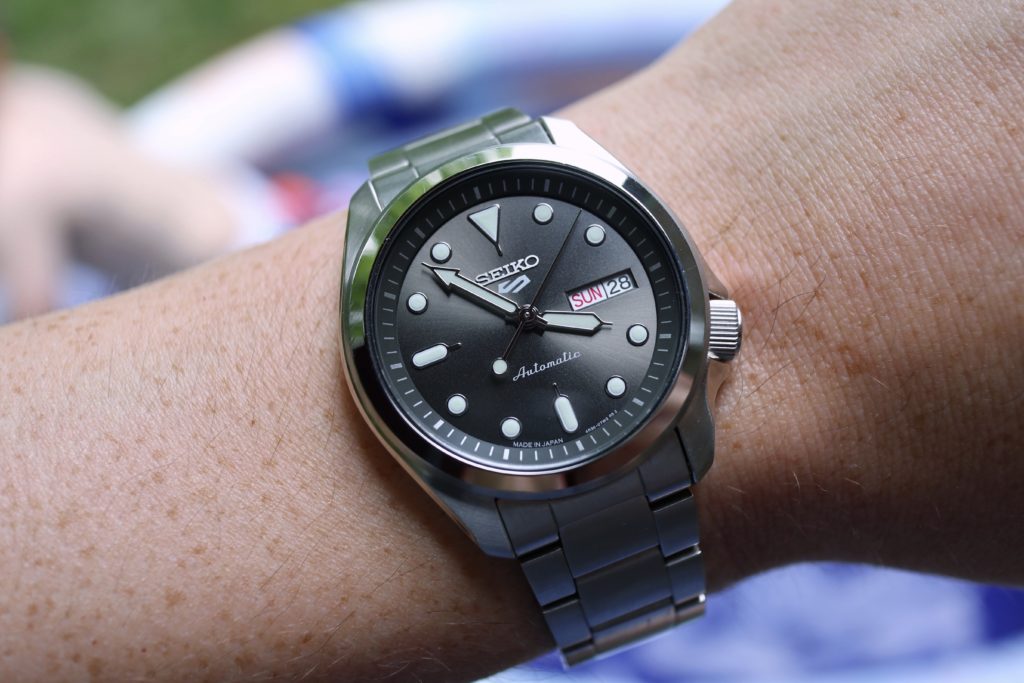
| Case Size: | 40mm x 44.6mm x 11.50mm |
| Movement: | 4R36 (Mechanical Movement) |
| Power Reserve: | 41 Hours |
| Accuracy: | -35/+45 seconds per day |
| Manual Winding/ Hacking: | Yes/Yes |
| Price Range: | $200 – $295 |
The design of Seiko’s SRPE51 moves away from its rugged SKX007 dive watch DNA, landing instead in the sweet spot between casual and refined. By opting to replace the dive watch bezel with a minimal smooth, fixed bezel, the case design feels more deliberate, letting the polished surfaces and fluid case lines actually take center stage. On the wrist, our review team found the watch much easier to wear than the original SKX007 as well as the new dive watch iterations of the updated 5KX. The 40mm diameter, 44mm lug-to-lug measurement, and 12mm thickness largely contributed to this comfortable wearing experience because the watch felt less like “gear” and more like an everyday timepiece.
In person you’ll note that the dial leans into a modern aesthetic with a deep grey sunburst effect that catches light very elegantly. While the SRPE51 features the same Hardlex crystal as its 5KX dive watch cousin, the hands are more refined here, featuring more elongated curves and less sharp angles. Again, our team really appreciated our hands-on time with the 4R36 movement here (which is becoming one of Seiko’s ubiquitous, base level movements) due to its hacking, hand-winding, and overall improvements over the original SKX007 7S26 movement.
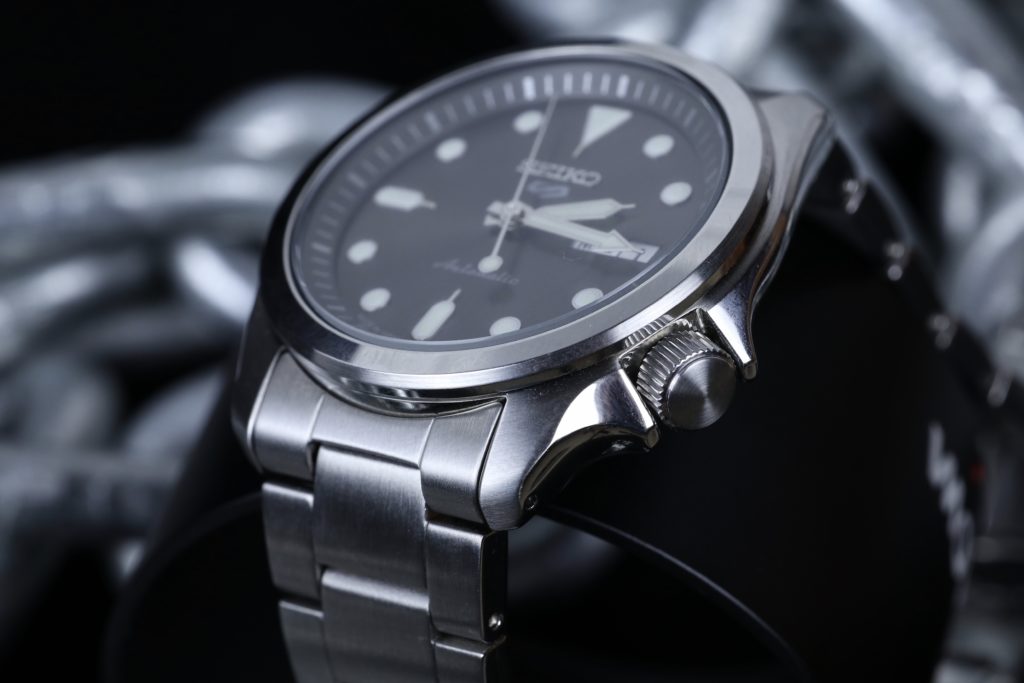
One downside is that since this is one of the more affordable offerings from Seiko, it features hollow end links and a less-than-ideal overall fit and finish, which contribute to the watch feeling a bit less light and robust. On the plus side, the lugs are drilled meaning that you can swap the bracelet out for a 20mm leather strap or maybe canvas (both of which our team agrees would look great). At the end of the day though, if you’re looking for an affordable everyday watch that isn’t a minimalist field watch or something too bulky, the Seiko SRPE51 should absolutely be a contender. You can pick the watch up directly from Seiko for $295 however, you can also sometimes find it on Amazon for around $200 or less. Our full SRPE51 review has more hands-on testing photos and personal insights if you’d like to learn more.
Seiko 5KX (SRPD51)
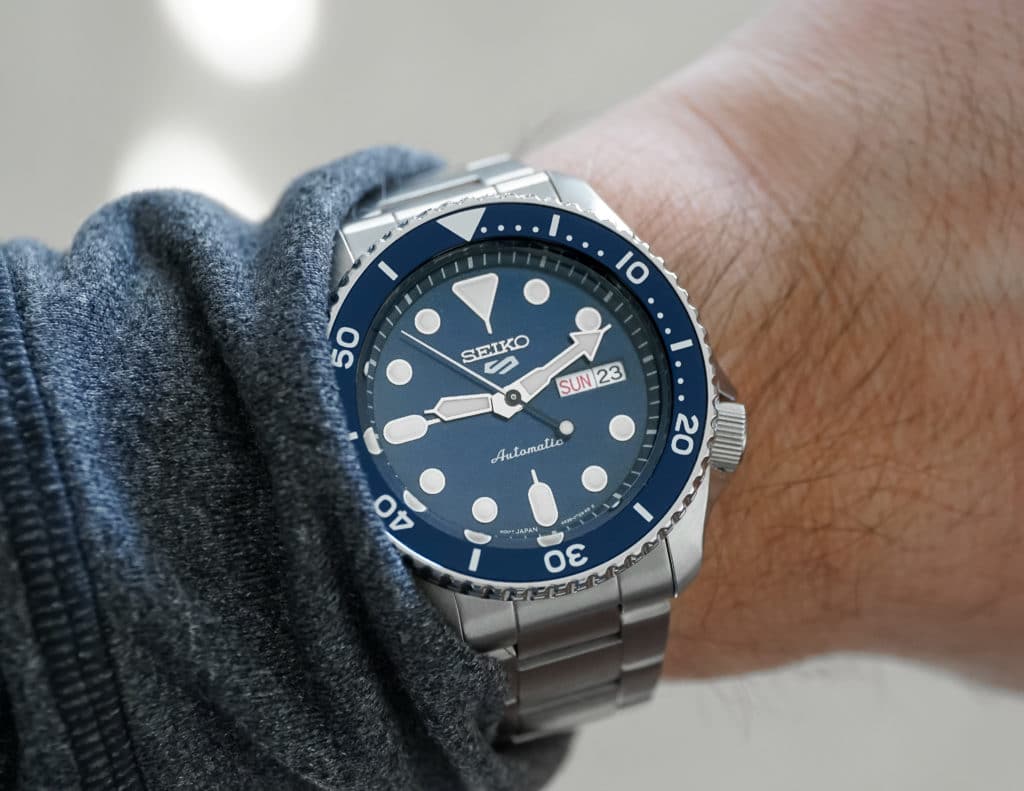
| Case Size: | 42.5mm x 46mm x 13.4mm |
| Movement: | 4R36 (Mechanical Movement) |
| Power Reserve: | 41 Hours |
| Accuracy: | -35/+45 seconds per day |
| Manual Winding/ Hacking: | Yes/Yes |
| Price Range: | $275 – $325 |
Similar to the SRPE51, Seiko’s 5KX Sports lineup trades the SKX’s no-nonsense dive watch cred for something a little more stylish and everyday wearable. But it still holds onto just enough of that old-school charm to feel right at home for hardcore Seiko enthusiasts (like our team). During our testing we felt that the 42.5mm case was incredibly familiar, comfortable, and quite solid – most of this comes from the fact that the DNA of this case design comes from the SKX (which very much embodied these wearing traits). However, at 13.5mm thick, it’s possible for the watch to feel a bit more top heavy than you’d expect if you’re used to wearing timepieces with a slimmer profile. One upgrade from the previous SKX line that’s quite welcome also is the use of a display caseback, which allows the movement to be visible and is something we found quite enjoyable during everyday wear.
Speaking of the movement, that’s the other update that we found to be very much needed. These new 5KX models feature the 4R36 automatic movement which allows the watch to manually wind and hack (features missing from the original SKX). Some of these technical upgrades come with tradeoffs though. The biggest tradeoff being the fact that the 5KX’s water resistance is now only 100m (rather than 200m like its predecessor). But truthfully, in the time our team has been reviewing watches, for most everyday watch-wearing individuals, 100m of water resistance is more than enough.

And then there’s the bracelet. We wanted to like it, but the untapered links and flimsy feeling clasp were a letdown. However, the case features drilled lugs (another improvement from the SKX), so swapping the bracelet out for another strap is incredibly easy. At the end of the day though when we take a step back, while there are some shortcomings of this particular 5KX model, as a whole this new revitalization initiative for the SKX design has ushed in a wide variety of dial, finish, and style options that would have been unprecedented without the first wave of models like the SRPD51. At the end of the day though when we take a step back, this new revitalization initiative for the SKX design has ushered in a wide variety of dial, finish, and style options that would have been unprecedented without the first wave of models like the SRPD51.
Pricing for this particular 5KX model hovers around $325 on the official Seiko site, which you should check out just to explore the variety of the 5KX lineup. If you look on Amazon though you can sometimes find it for less – so be sure to price compare. Also, check out our full hands-on review of the Seiko 5KX for more unique photos and personal insights.
Seiko 5 GMT (SSK005)
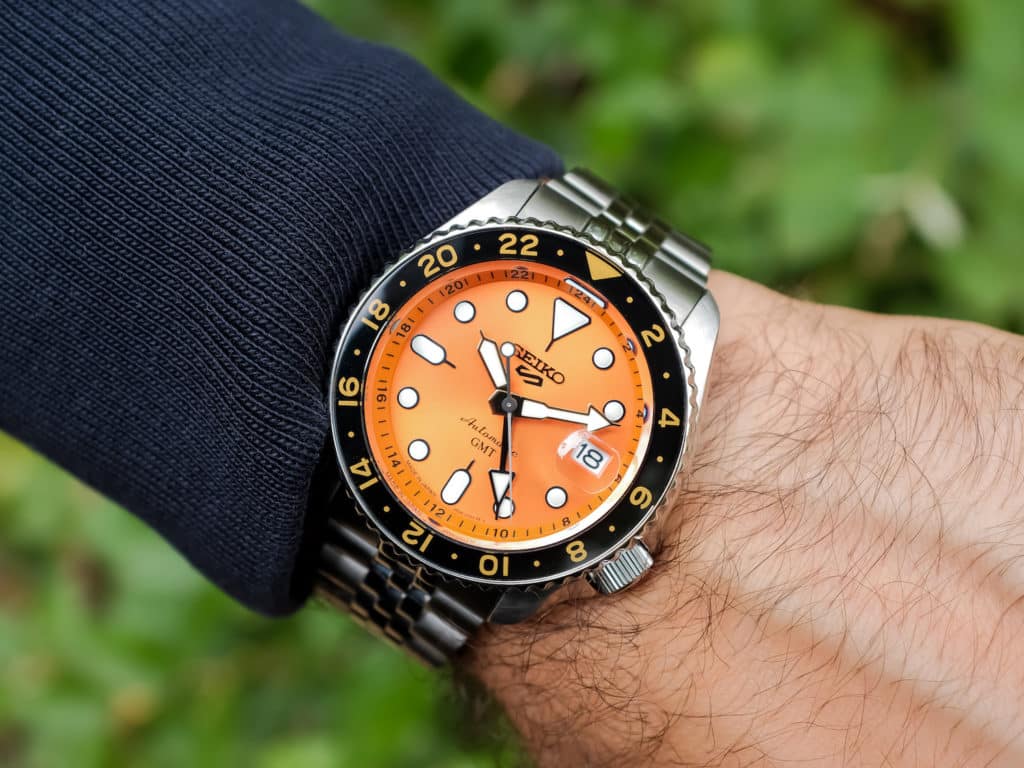
| Case Size: | 42.5mm x 46mm x 13.6mm |
| Movement: | Seiko 4R34 (Mechanical Movement) |
| Power Reserve: | 40 hours |
| Accuracy: | +45/-35 seconds per day |
| Manual Winding/ Hacking: | Yes/Yes |
| Price Range: | $350 – $475 |
Seiko has this uncanny ability of toying with not only my but our entire review team’s emotions and no event made that more apparent than when Seiko released the first Seiko 5 GMT. Part of the 5KX revitalization, the Seiko 5 GMT utilized the case design and stylings of the original SKX and placed their brand new in-house GMT movement (the 4R34) inside it. But the part that we found truly impressive is that since this is part of the Seiko 5 collection, the price of $475 is incredibly affordable for an automatic GMT.
In person the bi-directional, friction GMT bezel does something wild with light reflection, shifting between black and gray. It does a lot to help the watch feel fresh and dynamic if you end up wearing it for a long time (like our team did). The particular model we reviewed had the orange sunburst dial, which (like the bezel) played with light in a very dynamic way. Plus, the hands and dial feature Seiko’s in-house lume (called Lumibrite), which always performs far above what’s expected for its price range.
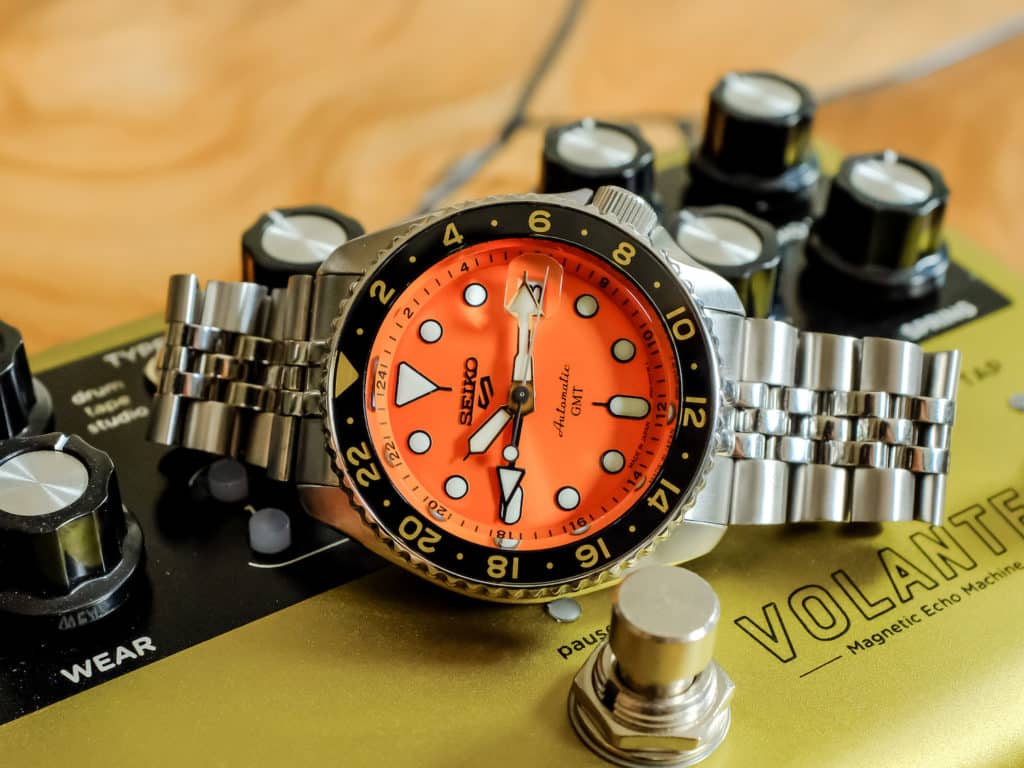
On the wrist, we found the jubilee-style bracelet to be both a concession in terms of quality (sometimes feels flimsy, not the greatest QC) but also a beautiful design choice. Stylistically, the bracelet is a clear callback to the original SKX’s jubilee bracelet and it fits the design of the watch very well, which we (as fans of the original SKX design) greatly appreciated. Plus, in terms of the quality leaving a bit to be desired, that’s how these brands tend to keep watches in these categories affordable.
While comparing the Seiko 4R34 GMT movement to other automatic GMT movements that are available, it’s not going to be the best. However, most higher quality automatic GMT movements will also be at least double the price. That’s why we feel that historically this is one of Seiko’s best releases ever, simply because it made automatic GMT movements affordable. Be sure to explore the official Seiko site for all the Seiko 5 GMT dial options out there. If you’re in the mood to price compare, Amazon’s prices are usually better and are worth checking out. Be sure to also explore our full hands-on review of the Seiko 5 GMT.
Seiko Turtle
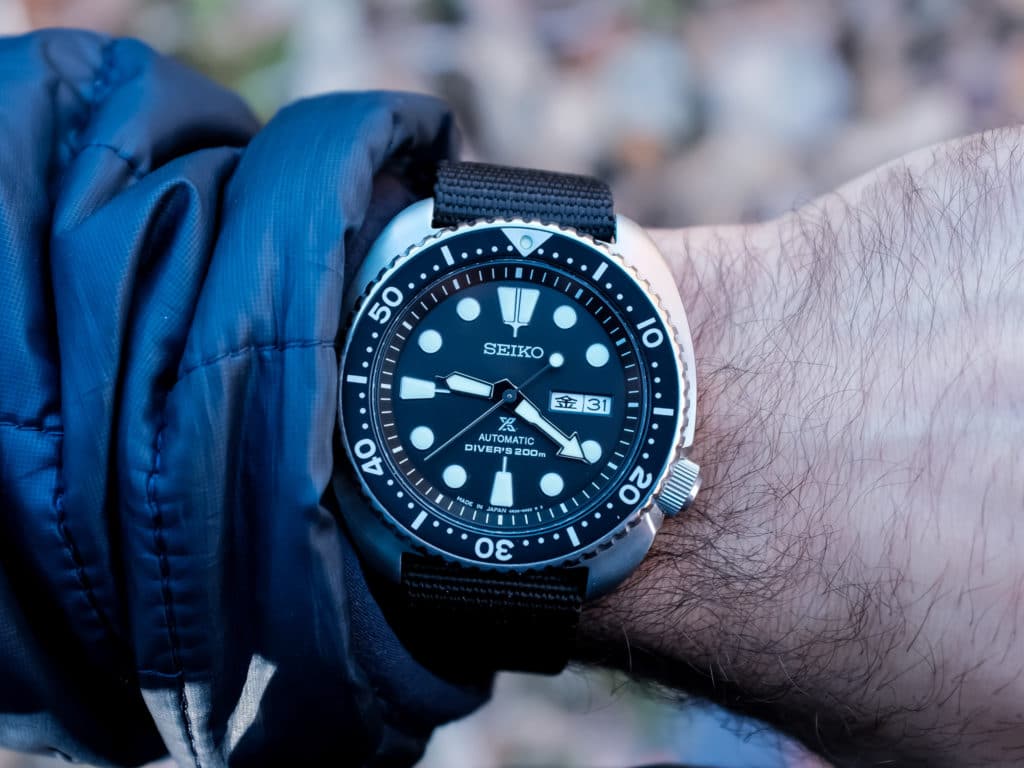
| Case Size: | 44.3mm x 48mm x 14mm |
| Movement: | 4R36 (Automatic Movement) |
| Power Reserve: | 41 hours |
| Accuracy: | -35/+45 seconds per day |
| Manual Winding/ Hacking: | Yes/Yes |
| Price Range: | $370 – $625 |
The Seiko Turtle traces its roots back to the legendary Seiko 6309 from the 1970s, a dive watch that built its reputation on durability, reliability, and pure tool-watch charm. Then in 2016 Seiko re-released the Turtle with modern material and movement technology updates, but the DNA remains intact. With a 44.3mm stainless steel case, a 14mm thickness, and a 48mm lug-to-lug, it’s a big diver on paper but it wears smaller than expected thanks to its rounded cushion case. That’s honestly part of the magic – its asymmetrical case shape makes it more wearable than other similarly sized divers.
In fact, while our team was testing the watch, it was worn on a 6.75 inch wrist without any issue at all. The Turtle’s matte black dial, large Lumibrite indices, and bold hands give it as close to perfect legibility as possible (day or night). You’ll find the bezel action satisfyingly smooth, but we noticed on the model we tested that it featured some bezel alignment issues, which can unfortunately be common with Seiko divers. In contrast though the recessed screw-down crown is easy to access and well protected by the case design, which reduces the risk of accidental bumps.
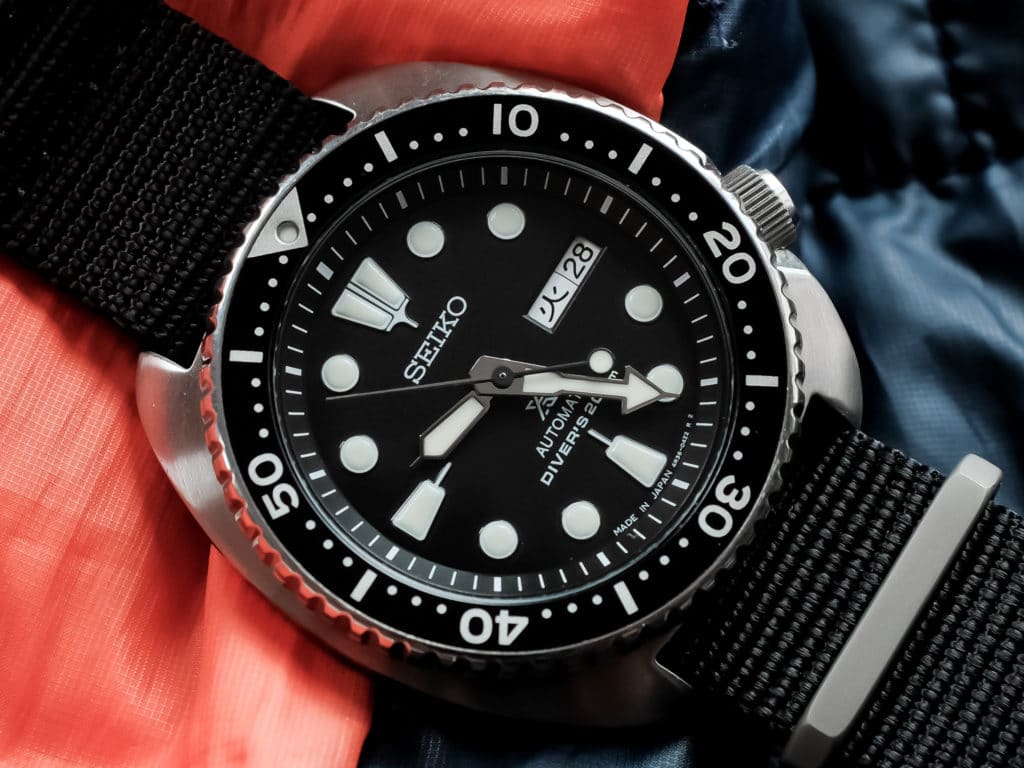
Like some other Seiko watches on this list, the Turtle features the 4R36 automatic movement, which allows the watch to hack, manually wind, and have a 40 hour power reserve. Accuracy isn’t the intended purpose of this movement, but reliability and robustness are. We did find its accuracy to be a bit inconsistent, but for the price and the features you’re getting with this watch, it’s a very small concession. The Turtle is offered with a silicone strap or a stainless steel bracelet. We found the bracelet quality to be pretty inconsistent on the watch we tested and other Turtle models we’ve handled, but the silicone strap has consistently been top quality and very comfortable. You can also fit the watch with a NATO strap, which really highlights the tool watch nature of the case design.
Prices vary for the standard Turtle models between the official site and Amazon, but we generally recommend Amazon since you can find the silicone strap version of the Turtle for around $370 (compared to $495 on the Seiko site) and the bracelet version for $425 ($625 on the Seiko site). We have a full hands-on review of the Seiko Turtle with more real-world takes and unique photos if you’d like to learn more.
Seiko Samurai
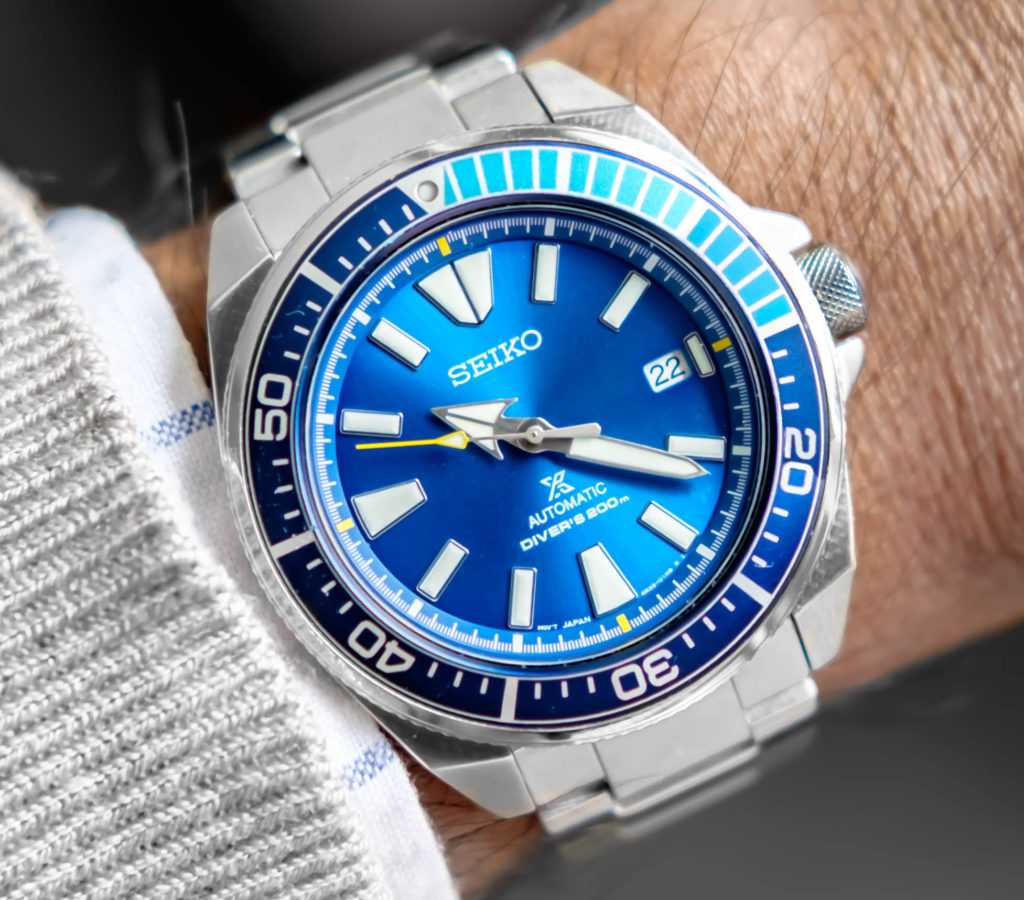
| Case Size: | 44mm x 47mm x 13.4mm |
| Movement: | 4R35 (Mechanical Movement) |
| Power Reserve: | 41 Hours |
| Accuracy: | -25/+35 seconds per day |
| Manual Winding/ Hacking: | Yes/Yes |
| Price Range: | $390 – $525 |
The Seiko Samurai’s 43.8mm case reads large on paper, but in reality, the short lugs and ergonomic shape keep it surprisingly manageable on the wrist. Originally discontinued in 2008, the Samurai made its comeback in 2017 with modern updates while keeping its signature case shape. And it’s the case shape that makes the Samurai an iconic milestone in the history of Seiko divers. The case is all about angles – it’s all sharp lines and brushed steel that catch light aggressively, giving you the sense that it’s more of an engineered tool rather than anything organic or visually asymmetrical (a hallmark of other Seiko divers like the SKX007 or the Turtle).
The bezel and crown both feature a knurling effect, which reinforces its aggressive engineered design. However the bezel itself on the particular Samurai model we reviewed was quite tight and the knurling actually made it a bit difficult to grip. That’s in stark contrast to the knurling on the crown which we found to be very easy to operate and use.
The bracelet here is also a rare standout since this is generally where brands cut corners to keep costs down. Not only is the Samurai bracelet comfortable and finished very well, its endlinks mesh with the case in such a way that they complete the overall design. If you take off the endlinks, it feels like something is missing from the watch and it feels incomplete. That’s why this is one of those rare occasions where we’d recommend not swapping the bracelet for NATO or anything like that.
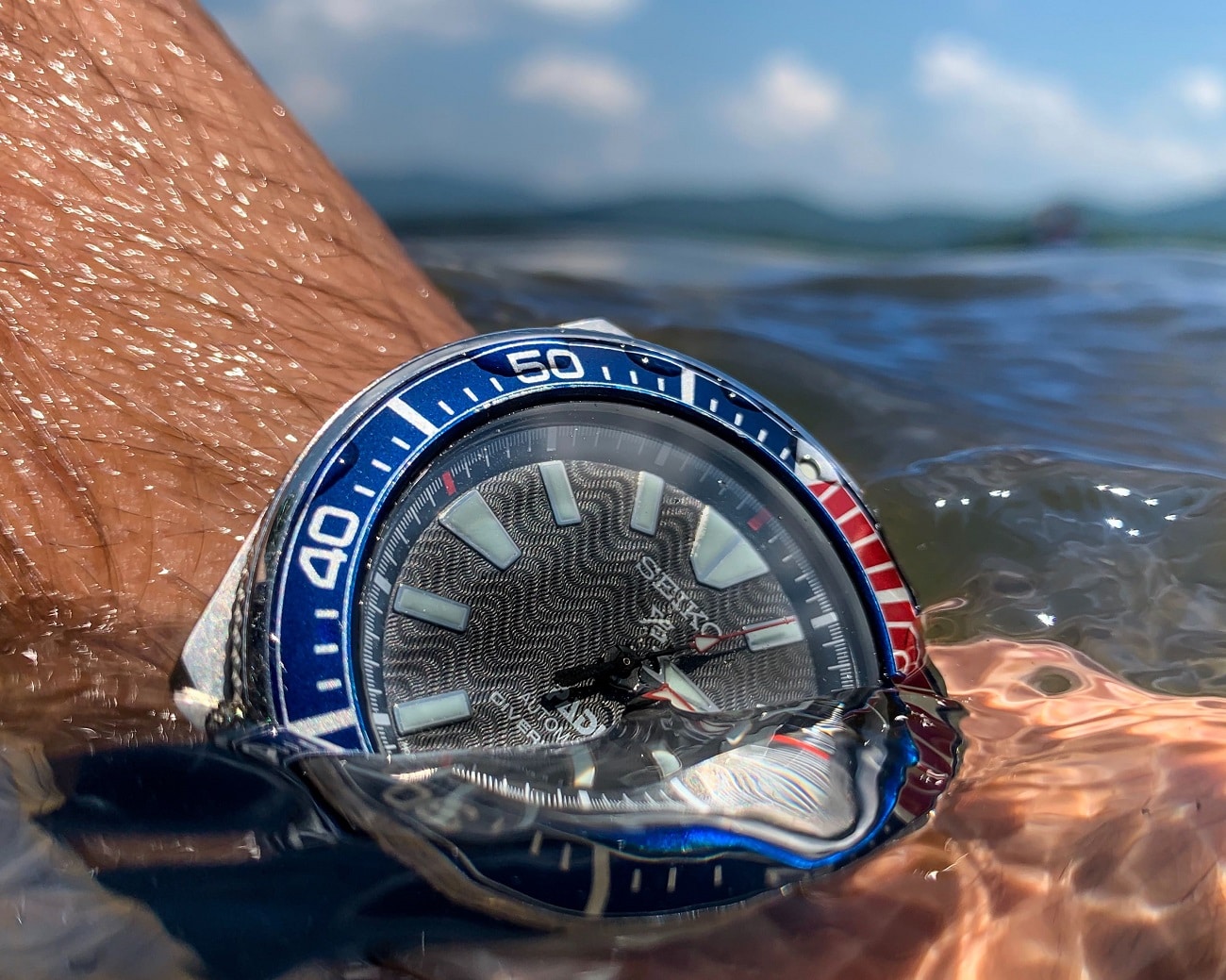
Like some other watches on this list, the Seiko Samurai features the 4R35 automatic movement, which features hacking, hand-winding, and is overall a great reliable movement. One thing that we learned after reviewing the Seiko Samurai is that unlike many other Seiko divers, the Samurai will most likely not age well with wear. By that I mean that while the curves and design of the Turtle will develop more character with dings, scratches, and all the normal wear and tear that happens, the Samurai won’t. Its design depends on the angular case and sharp edges appearing as pristine as possible, which isn’t a bad thing. It’s just an aspect of the watch that’s worth knowing in case you’re looking for a tool watch to be worn in situations where it may get damaged.
However, if you’re looking for one of the most aggressive Seiko case shapes ever design and don’t really intend to wear the watch in any rugged situations, the Samurai would be one of the best options we could recommend. Like most of the other Seiko watches on this list, the official Seiko site has the standard entry-level Samurai available for full MSRP of $525, however you can generally find it for much less on Amazon (usually under $400). For our full breakdown of this watch, be sure to check out our hands-on review of the Samurai.
Seiko Sumo
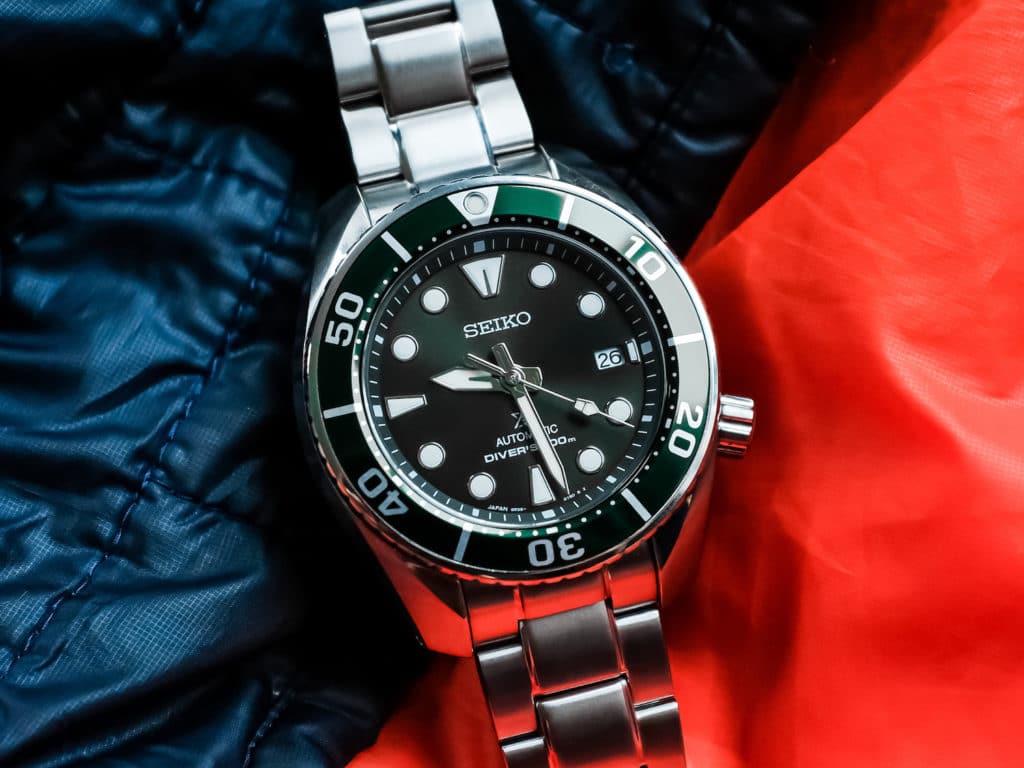
| Case Size: | 45mm x 52.6mm x 13.5mm |
| Movement: | 6R35 (Automatic Movement) |
| Power Reserve: | 70 hours |
| Accuracy: | -15/+25 seconds per day |
| Manual Winding/ Hacking: | Yes/Yes |
| Price Range: | $600 – $800 |
The Seiko Sumo lives in a weird limbo amongst the roster of Seiko divers. It’s too premium and expensive to be a budget beater dive watch, yet it’s also not quite high-end enough to break into the serious collector’s sphere. That’s probably why it has a bit of a black sheep status, constantly being overshadowed by its Turtle and Samurai siblings (also featured on our list). The other feature holding the watch back from receiving the recognition it deserves is its size. At 45mm in diameter, 52.6mm lug-to-lug, and 12.9mm thick it’s one of the largest Seiko dive watches out there.
But here’s the reality, the Seiko Sumo is the most underappreciated watch in the brand’s lineup. Kaz Mirza (our site’s Co-Founder) personally owned a Sumo for years and conducted a hands-on review of the watch. From his review, the watch wears shockingly well, thanks to a case that sweeps and curves in an incredibly ergonomic fashion around your wrist. It still feels very robust and has a strong wrist presence though. It’s built like a tank but dresses like a sports coupe, with polished and brushed surfaces playing off each other in a way that’s rare for a diver at this price.
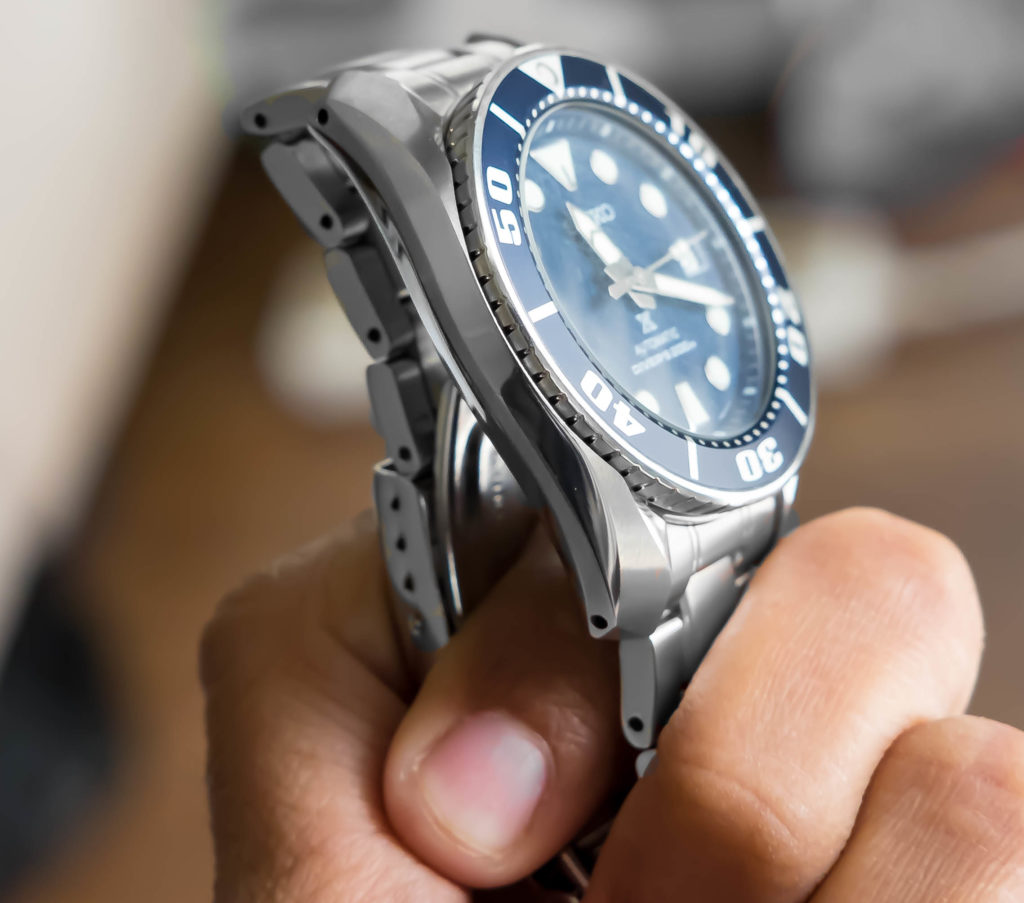
The upgraded sapphire crystal (replacing Hardlex from the previous generation), screw-down crown, and 200m water resistance reinforce its tool-watch credentials, while the Lumibrite-coated hands, indices, and bezel pip make the lume nearly unmatched against any other watch in its category. The newer generation of Sumos feature Seiko’s 6R35 movement, which is an upgrade to the previous generation’s 6R15 movement, featuring a longer 70-hour power reserve and more reliable construction. One thing to take note of that’s probably one of the most dividing aspects of the Sumo is its lug width. At 20mm, the bracelet (which is quite high quality) can feel a bit undersized on certain wrist types and sizes since a 22mm lug width would technically allow the Sumo to feel more universal in terms of wearing experience.
Despite its underdog status, the Seiko Sumo is the best choice for someone who wants a Seiko diver that feels a bit more refined and is more of a departure from the classic, vintage-inspired offerings among the brand’s offerings. Availability of the newer generation of Sumo models is really limited to the official Seiko site, meaning that the full MSRP price of $810 is most likely what you’ll pay, but if we learn about any deals or discounts elsewhere we’ll share it here. Also be sure to explore our review of the Seiko Sumo for more helpful insights.
Seiko Marinemaster 300
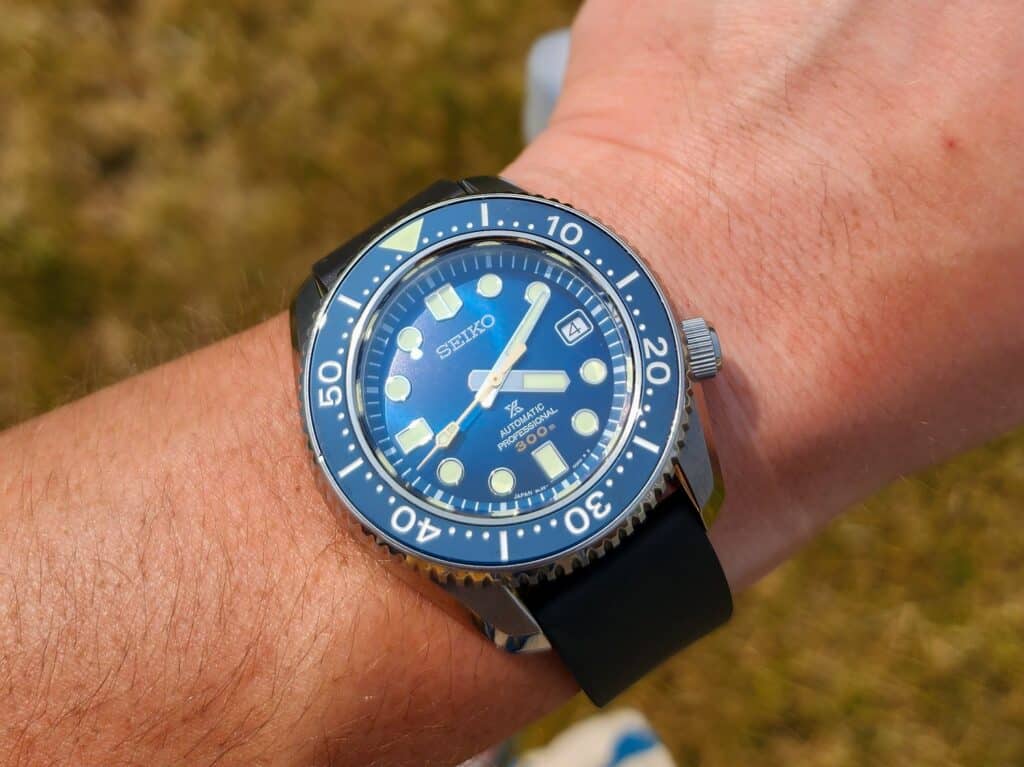
| Case Size: | 44.3mm x 50.5mm x 15.4mm |
| Movement: | Seiko 8L35 |
| Power Reserve: | 50 hours |
| Accuracy: | +15/-10 seconds per day |
| Manual Winding/ Hacking: | Yes/Yes |
| Price Range: | $3100 |
There’s something about the Seiko Marinemaster 300 that just gets under your skin once you’ve actually worn it. During our testing we determined that it’s not the most practical dive watch out there – far from it truthfully. But that’s also what makes it one of the most unique, misunderstood, and unforgettable Seiko divers we’ve ever reviewed. The monocoque case (meaning it’s a single piece construction without a caseback) and Grand Seiko-level zaratsu polishing create a dive watch with a real sense of visual presence. But more than just looks, the watch is physically a beast in every sense of the word. The case is 44mm wide with a 50.5mm lug-to-lug span and 15.4mm of thickness, measurements that honestly we really only recommend to anything with a larger wrist size.
In our team’s case, the size of the watch in conjunction with the chunkiness of the bracelet made it quite uncomfortable. We were only able to make it a bit more wearable after swapping out the bracelet for a NATO or a rubber strap. That aside, the bezel action is smooth, heavy and has a very satisfying feel when operating it. Plus, the lume here is bright, long-lasting, and beautiful, which is everything you’d come to expect from Seiko lume. One of the more unique features of the Marinemaster is the hand-assembled 8L35 automatic movement, which Seiko reserves for its top-tier, premier dive watches. The 8L35 is related to the Grand Seiko 9S55 movement, which means that it features higher quality materials, tighter accuracy, and more reliable QC.
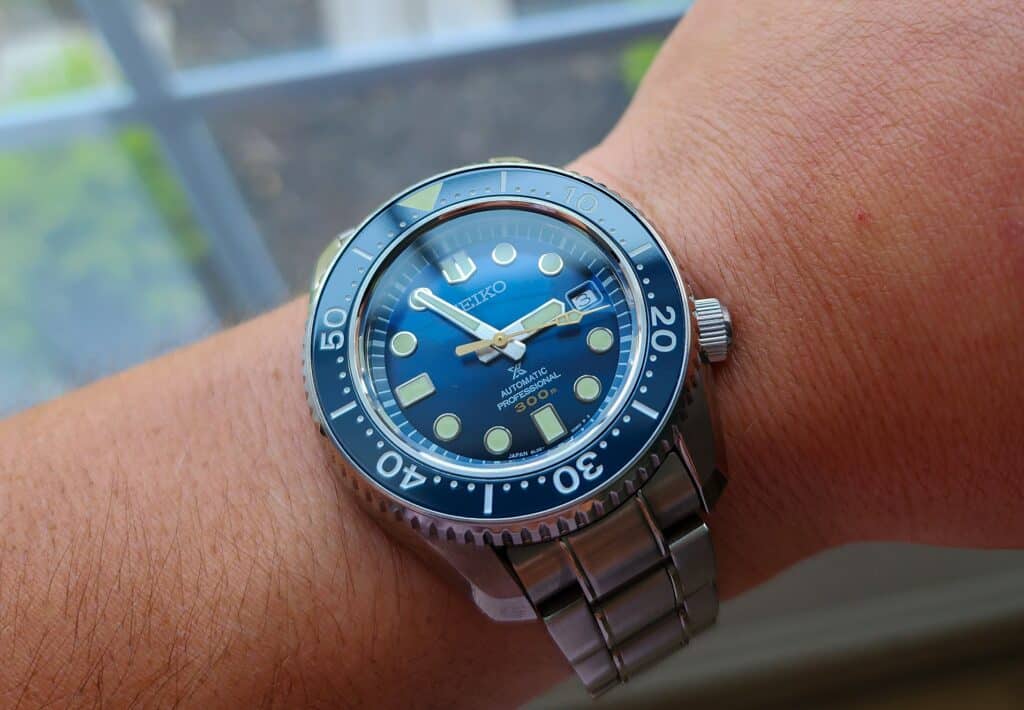
After spending time with the Marinemaster though, our team was able to determine that the true appeal of the watch is for hardcore Seiko fans who may be jaded from all the typical and traditional Seiko dive watch offers. So, while the watch is large and features its downsides, it is one of the best Seiko watch examples of just how distinctive and unique the brand can be when thinking outside the box (but still within their own DNA). The Marinemaster 300 is priced at $3,100 and due to its unique place on the hierarchy of Seiko divers, your best bet is going to be purchasing it from the Official Seiko site since most other online retailers don’t reliably carry it. Be sure to read our full hands-on review of this incredibly unique Seiko watch.

Nathan Schultz is a New Hampshire based writer with a passion for affordable timepieces. He became obsessed with automatic watches in 2019 after learning not all watches have batteries, and quickly fell in love with the joys of collecting and modifying watches and meeting fellow enthusiasts. When not poring over new releases from big brands and microbrands, he can be found putting his tool watches to the test on local hiking trails.
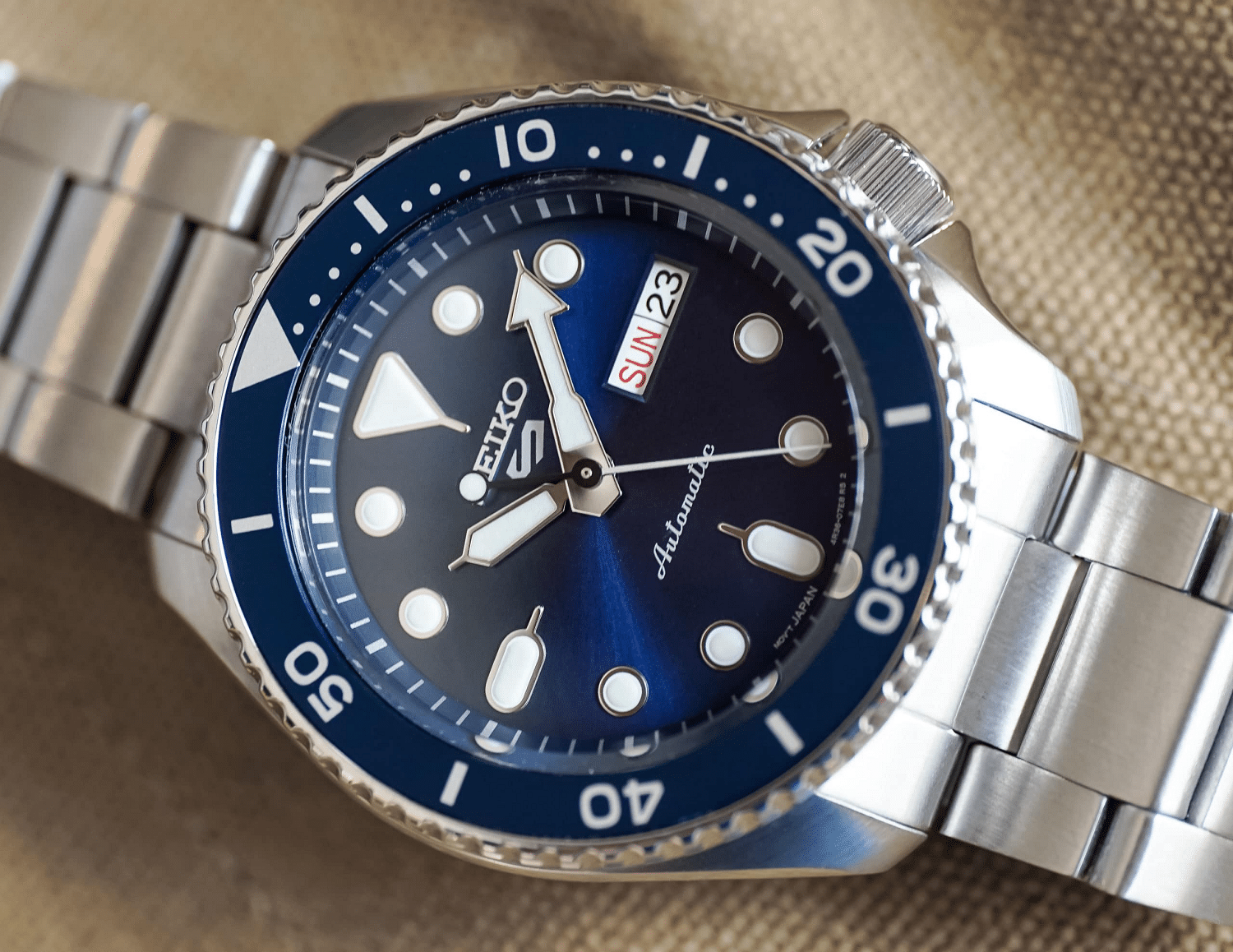
Amazing article, Seiko has been my passion since my trip to Japan, that’s when I picked up a seiko for a souvenir..
No love for The Monster
David:
Great callout! We’ll be sure to include the Monster on the next update soon – thank you!
-Kaz